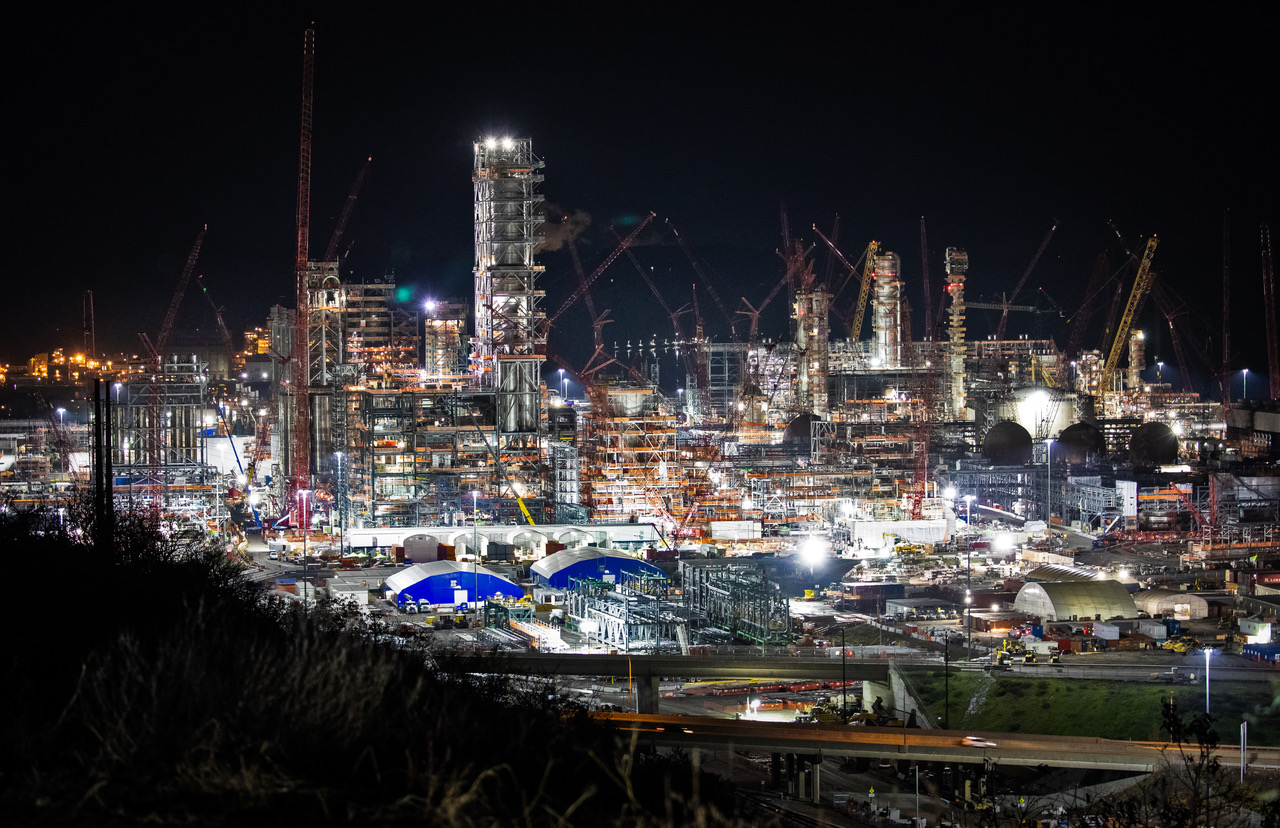Industry’s Dream Petrochemical Hub Would Be A Nightmare

Royal Dutch Shell’s 386-acre ethane cracker is set to power up this year about 25 miles outside of Pittsburgh in Beaver County. It was planned as the anchor for a vast Petrochemical Hub of four more crackers strewn across the Ohio River Valley atop massive underground storage caverns.
Pennsylvania courted Shell’s plant with a $1.65 billion tax break–$2.7 million for each of the 600 permanent jobs promised by what was then the world’s fourth richest corporation. Pennsylvania taxpayers are being forced to subsidize the creation of 1.8 million tons per year of polyethylene pellets–the “nurdles” that are the building blocks of single use plastic items.
Besides the plastic trash lining our streets and littering our beaches, nurdles near Louisiana’s “Cancer Alley” petrochemical corridor from Baton Rouge to New Orleans wash up in Gulf Coast waterways, and the degraded microplastics turn up in human bodies. Meanwhile, less than 10% of all plastic is recyclable and incinerating the rest is hazardous to nearby residents and local ecosystems.
Shell’s plant will release 159 tons per year of fine particulate matter and 522 tons per year of volatile organic compounds (VOC), according to the Council’s 2014 Health Impacts Assessment. VOCs contribute to ground-level ozone and, along with the other emissions, exacerbate health conditions including asthma, cardiovascular disease, cancer, endocrine disruption, and adverse birth outcomes. Cracker emissions that hug the river valleys could travel right into Pittsburgh.
In 2016, the Council canvased door-to-door in towns near the construction site for fence line monitoring at the plant—a concession that the Council and Environmental Integrity Project fought hard to win from Shell in a two-year legal battle. That 2018 victory was precedent-setting, but certainly not the end of the fight. The enormous Shell facility will require the support of gas from 1,000 active wells at least every five years. That will result in more methane and VOC emissions from each of the compressor stations, cryogenic plants, “pigging” operations, injection wells, diesel trucks, trains, and pipelines supporting those 1,000 wells.
In 2018, when the Revolution pipeline exploded near the cracker site on a residential cul-de-sac, with one family fleeing their home’s destruction, the Council supported residents’ efforts to tell their story, navigate legal channels, and seek future safety protections. In 2019, the Council coached resident teams to watchdog construction of the 97-mile Falcon pipeline—built to carry 107,000 barrels per day of highly volatile ethane to the cracker—for violations like spills. Meanwhile, leaks from pipelines like the Revolution and the Falcon have been part of Council’s campaign against climate-killing methane emissions.
There must be a better approach to fostering economic development in Southwest Pennsylvania. The Council has also supported ReImagine Beaver County (RBC), launched in 2017 with the collective brainstorming of concerned residents on how to promote green jobs. RBC is now part of the new ReImagine Appalachia movement and poised to recruit green energy investors. In 2020, the Council launched the first-ever ReImagine Beaver County High School Essay Contest and helped launch www.reimaginejobs.org—an educational website showcasing nine promising sectors of green economic development in Southwest Pennsylvania. The Council has organized programs, mailers, testimonies, yard-sign postings, legal research, sign-on letters, right-to-know requests, DEP file reviews, social-media posts, and appeals for protective oil and gas ordinances at municipal meetings. That vigorous outreach may have paid off with PTTG’s 2020 indefinite delay of its plans for the region’s second cracker–because, without a second cracker, the great buildout dream will be lost.
For More Information Contact Terrie Baumgardner at tbaumgardner@cleanair.org

